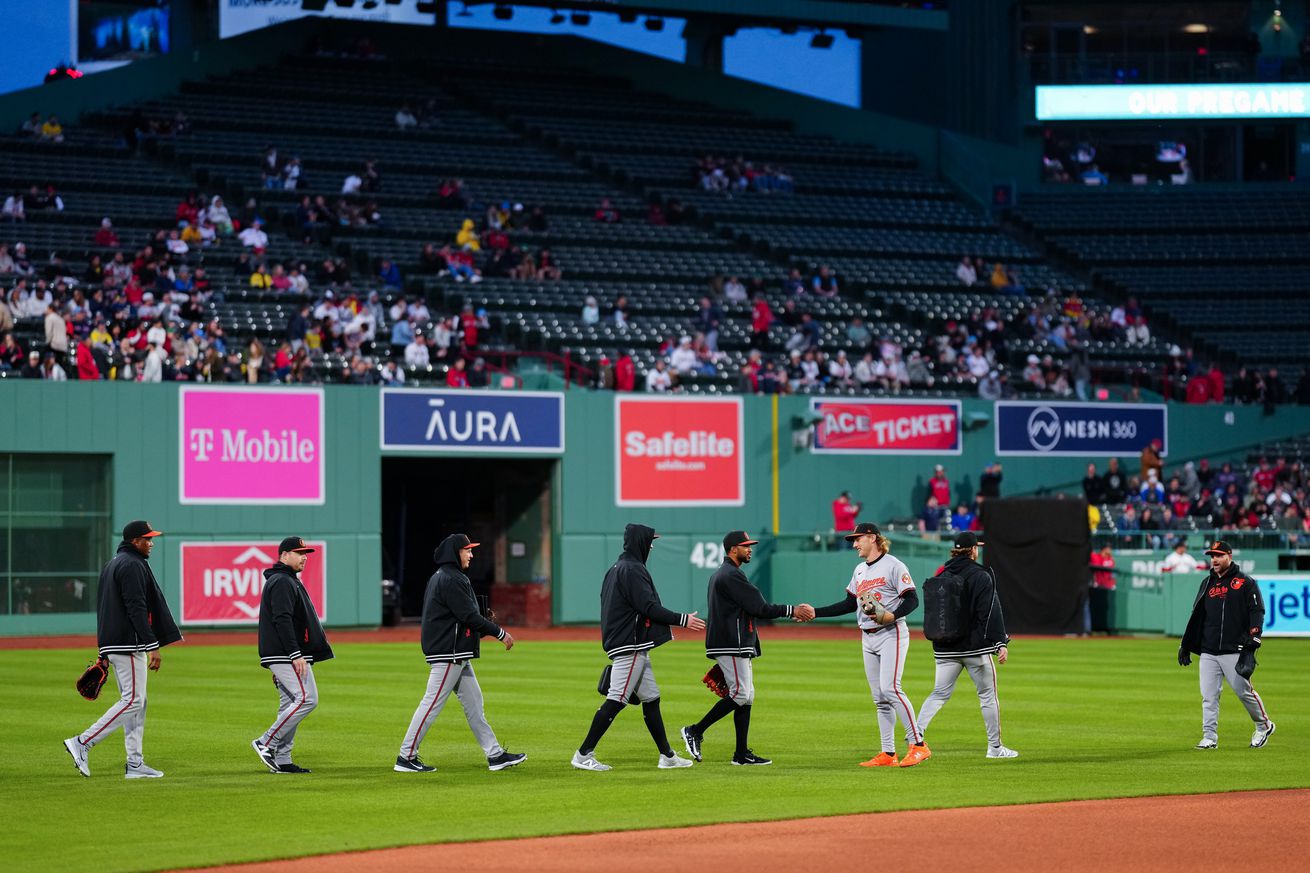
In brief, it’s too many hard hits and also normally good players fading under pressure
As good as this Orioles team has been so far, it feels wrong to finds things to complain about, but—let’s do just that. Two months into the season, it’s been up-and-down for the bullpen. Remember those two ugly walkoff losses to Pittsburgh back in early April? Or the pair of late-inning collapses to an uncompetitive Oakland later that month? Or in the last two weeks, when the team failed to close out winnable games against Toronto and St. Louis?
According to basically every stat you can think of, the Orioles ‘pen is thoroughly “mid,” as the kids say. They’re 15th in ERA/FIP and 17th in fWAR. They’re middle of the pack in strikeouts (8.47 per game), walks (3.61/9) and home runs (0.91/9). Their 60% save percentage is almost smack dab between MLB leader Seattle, at 81%, and cellar-dwelling Miami, which blows more games than they save, at 42%.
Middle-of-the-pack isn’t terrible, of course, but for a World Series contender (yes, get used to saying it! The Orioles are a contender!), it’s a liability.
This is odd because, for years, bullpens were the saving grace of bad Orioles teams that refused to spend on stars, but did OK at unearthing random gems. For instance, the 2022 Orioles had four relievers (Cionel Pérez, Félix Bautista, Austin Voth and Jorge López) in their Top 12 in WAR, and the 2023 team three, if you count Tyler Wells (plus Bautista and Yennier Cano). This year’s team: none so far.
What gives? The pen hasn’t given up a ton of hits, with a .211 average against and a .256 opposing BABIP. They’re also ground ball specialists, with a 47.2% of batted balls, the third highest in MLB.
But one aspect of their contact allowed is troubling: hard hit rate. Only two teams in the league allow a higher percentage of hard-hit balls, Toronto and Washington. This is not a recipe for success. The ‘pen’s ground-ball tendency mitigates this problem somewhat, but high hard-hit rate means that fly balls turn into home runs. Indeed, a 10.5% home run/fly ball rate is elevated.
Who are the main offenders in this category? Take 38% as average based across all teams. Concerningly, only three O’s relievers fall below that rate: Albert Suárez, Jacob Webb and Cole Irvin. Two of them aren’t even in the bullpen right now. At the far end of the spectrum are three guys in the current mix: Craig Kimbrel (48.7%), Dillon Tate (47.7%) and Danny Coulombe (46.8%).
For Coulombe, this is concerning. Last year his hard-hit rate was 18 points lower. The difference seems to be his cutter, his main pitch, which batters are slugging. Average exit velocity on the pitch in 2023: 80.8 mph. In 2024: 96.3 mph.
There’s one other statistical category in which the Orioles bullpen looks downright bad next to the others, and that’s a stat known as “Clutch.” Let’s discuss. Adjusted to zero, “Clutch” measures how much better or worse a player does in a high leverage situation. For reference, a positive 2.0 score is “Excellent” and a -2.0 is “Awful.” It’s kept by both Fangraphs and BaseballReference. This season, MLB’s most clutch bullpen is San Francisco (2.49 according to Fangraphs) and its worst is Miami (-1.72). The Orioles, at -1.58, are second to last in MLB.
Who’s at fault? According to Fangraphs, only Coulombe, Tate and Cionel Pérez have been good in the clutch. Per BaseballReference, it’s the same list, and Yennier Cano is exactly 0.0. The least clutch? Mike Baumann (-0.9), Kimbrel (-0.5), Jonathan Heasley (-0.5) and Keegan Akin (-0.3).
Whether the O’s keep an eye on such stats or not, it’s worth noting that Baumann has since been DFA’d and Heasley optioned to Norfolk. Kimbrel had a rough stretch back there, but he hasn’t allowed a run in his last four outings.
As for Akin, another reliever seemingly on the hot seat, he’s been staving off hard contact (allowing an expected BA of .187), but his walks have spiked. It seems that this is explained in part by Akin’s fiddling with his stuff right now. He’s largely phased out his curveball and his changeup looks very different (and improved). So give him some leash.
The same, to a lesser extent, is true of Cano, too, who’s seen his walk rate nearly double (from 4.6% to 8.9%). Whiffs are down on his changeup, and there’s a lot harder contact against his bread-and-butter pitch, his sinker. It remains to be seen what’s going on with him.
Overall, the Orioles bullpen averages out to middle-the-pack in performance. In part, this is because a few experiments haven’t worked: Baumann and Heasley fall into this camp. Additionally, several of last year’s contributors, Bautista and Wells, are absent, while others, Coulombe and Akin, are currently struggling.
The Orioles front office should be aware of the holes it needs to patch up, and will continue to poke around for bullpen depth. It’s been a strength of theirs before.
